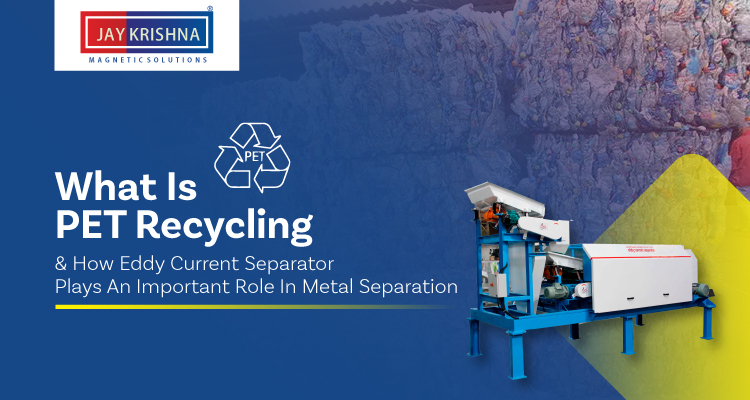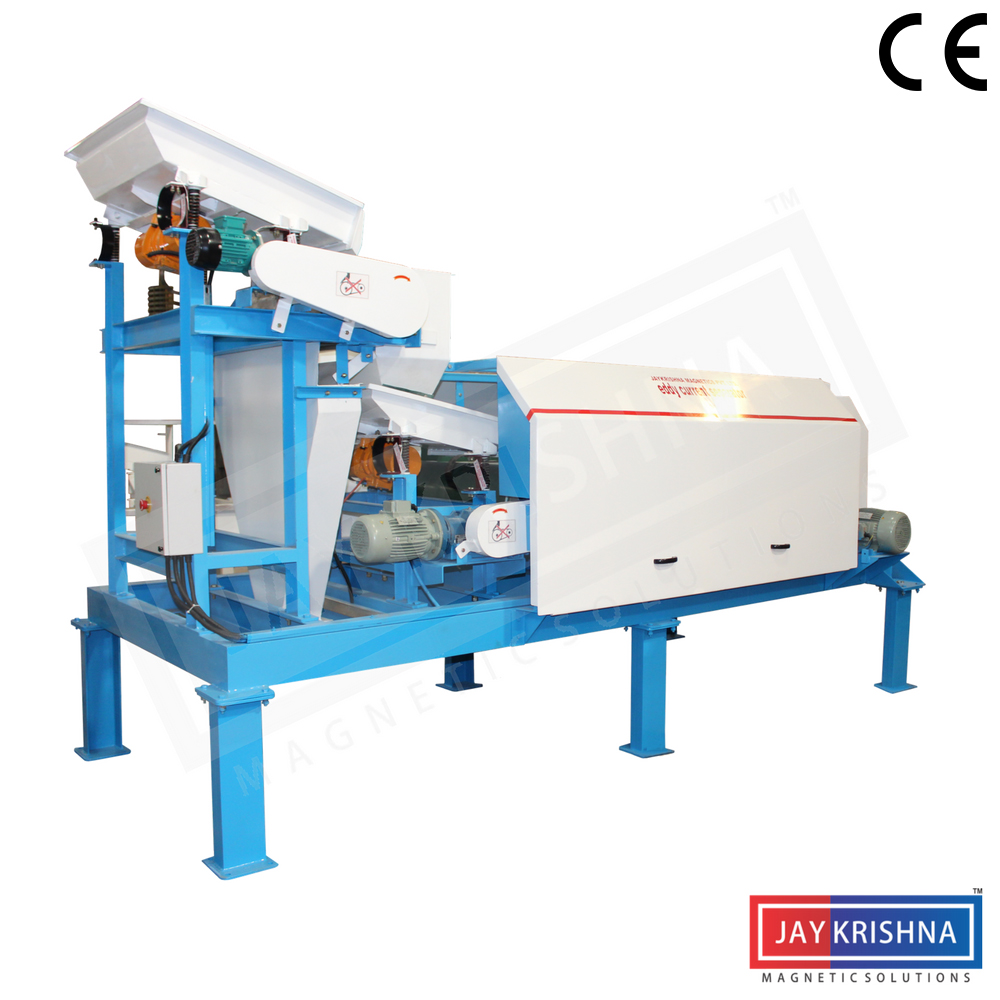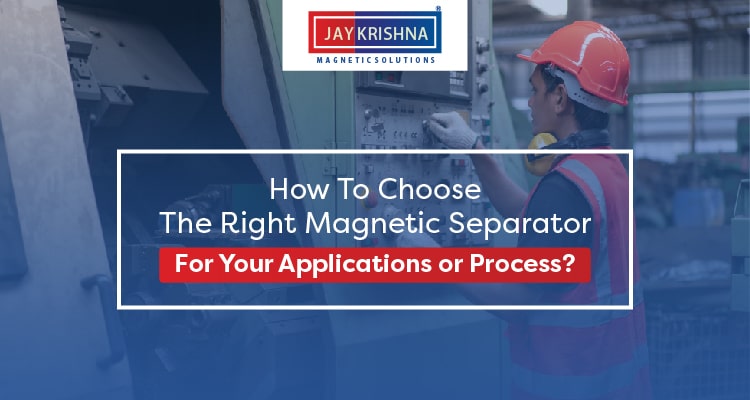What Is PET Recycling & How Eddy Current Separator Plays An Important Role In Metal Separation

In the recycling industry, PET stands for polyethylene terephthalate which is the chemical name for polyester. It is also known as PETE, PETG, APET, PETP or PET-P. PET is a type of strong, durable, and lightweight plastic that is used to make a variety of different products.
PET in the form of fibres is used to make clothing, combined with glass fibres is used to make resin and in its most common use, it is used to manufacture containers for food, liquids, and beverages. It is used to make bottles, boxes, packages etc.
PET does not interact with contents that are stored in a box made of it as it is a very inert polymer, this makes it ideal for storing food. It is also resistant, lightweight, and can create a barrier between oxygen and water that makes it perfect as a raw material for bottles to store liquids, water, and drinks. It is also transparent which enables it to result in transparent bottles, which is not possible for other raw materials like PP or PE.
What is PET Recycling?
Plastic is one of the world’s most used raw materials. It is able to be used in a vast range of applications. But these properties also make plastic non-biodegradable. Due to the world’s reliance on plastic, we also need a solution to manage the tonnes of plastic waste that is created. This is where recycling comes in. Not only does this help manage and reduce plastic waste, but it is also highly beneficial as a way to protect nature and the environment for the present and future generations.
Due to its popularity PET is also one of the most recycled plastics. It is also a very beneficial material as PET can be used in the same way again after recycling. E.g., PET can be used to make a bottle and then it can be used to make a bottle again after it is recycled. This means that PET is completely recyclable. It is also known as rPET after recycling.
After the process, rPET can be used in a variety of uses like
- Fibres to make pillows, clothes, duvets, carpets, etc
- A base material to manufacture bottles, containers, etc
- A material for roof insulation
- Geotextiles for buildings, dams, power stations and tunnels
How is PET Recycled?
PET is recycled in facilities like PET Recycling Plants. The used PET products are collected and delivered to the recycling plant. Here the labels, stickers, caps, etc are removed. They are sorted and separated by colour and then taken for shredding. Mostly the result is PET flakes. These flakes then need to be washed, dried, and decontaminated. This cleaned product is then melted and granulated. These rPET granules are then mixed with new PET granules, melted and then used as a raw material.
Now we know how rPET is reused. But how is rPET made ready for recycling? How are they decontaminated? The answer lies in the use of machines like Eddy Current Separators. They are a very important part of the PET recycling process.
What are Eddy Current Separators?
Eddy Current Separators are machines that are mainly used to separate and eliminate non-ferrous metals from mixed waste streams, residue streams, and recyclable material streams. It can separate materials like aluminium, copper, brass and other non-ferrous metals from product streams.
Eddy Current Separators have revolutionized the recycling industry in the sense that they provide an ideal, cheap, quick, and effective method to process and clean recyclable materials. The innovation of this machine was a crucial development for the recycling industry.
This machine makes use of eddy currents to carry out the separation process. It is a widely used machine in the recycling industry and recycling plants around the world use this machine to separate conductive non-ferrous metals from streams of recyclable materials. In the same way, Eddy Current Separators can be used to decontaminate and clean PET flakes streams.
Now let us find out exactly how Eddy Current Separators are able to clean PET flakes.
How do Eddy Current Separators work?
The machine consists of a feeder that feeds the material onto a short conveyor belt. This belt carries the material [in this case PET flakes] towards the rotors situated towards the end of the machine. These rotor shells are built with non-metallic materials while the interior of the rotor consists of either standard ferrite ceramic magnets or powerful rare earth magnets. The type of magnets used depends upon the application.
These magnetic rotors revolve and spin at high speeds which result in the creation of eddy currents. These eddy currents react to the different non-conductive metals present in PET flakes. They react according to their mass and resistivity and are repelled by the eddy currents. This way as the PET flakes flow from the conveyor belt in the field of eddy currents, the metal impurities are repelled and they fly off while the PET flakes discharge out of the machine and are collected.
These cleaned PET flakes can then be taken for recycling.
Conclusion
Jaykrishna Magnetics Pvt. Ltd. is one of India’s biggest and leading manufacturers & producers of Eddy Current Separators. We believe in manufacturing world-class equipment that is of high quality. Our products also reflect our belief in strength, resilience, and durability. We use the best materials to make out products that ensure long-lasting use.
To know more about our Eddy Current Separators and the vast range of other equipment we produce, please visit our website: www.jkmagnetic.com
- Lithium-Ion Battery Shredded Scrap Separation By Eddy Current Separator – A Definitive Guide
- Magnetic Separators For Detecting Impurities In Food Processing
- Why Quality Magnetic Destoner Matters in Food Processing Lines?
- 5 Most Useful Magnetic Separator For Food Processing Industry
- Everything You Should Know About Wet Drum Magnetic Separator


